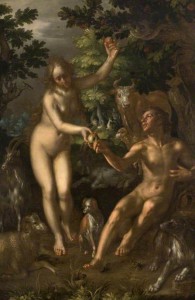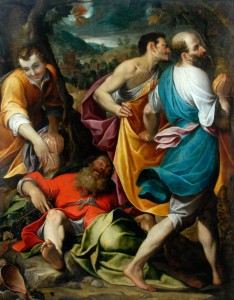As the leaves turn brown and the nights draw in, summer 2013 may seem a lifetime away. In gallery terms, however, only a couple of exhibitions separate September gloom from summer sunshine. Arranging an exhibition, I am learning, involves a great deal of planning and preparation; from the selection of artworks, to the painting of a gallery, the creation of an exhibition takes a lot of time and careful consideration. The Laing’s June-September 2013 exhibition, Divine Bodies, therefore, is very much on my mind.
Joining TWAM in March 2012, I arrived having carried out a 7 month period of training at the National Gallery. Working in the heart of London, I was lucky enough to learn how curators at one of the world’s top collections arrange the many splendid rooms and plan huge exhibitions, getting to know the ins and outs of being a curator at a large organisation such as the National Gallery. I was also fortunate to have been there during what surely must be one of the most exciting exhibitions of my lifetime, Leonardo da Vinci: Painter at the Court of Milan. Weeks on end, in the cold and rain, people would queue around the block for the chance to catch what people were calling the ‘show of the century’. It was quite astonishing seeing so many Da Vincis in one exhibition, The Lady with an Ermine a particular favourite for her timeless beauty. During those 7 months I also had the opportunity to work on the exhibition Turner: In the Light of Claude, writing some of the labels describing the artworks.
Coming to Newcastle was a new experience for me: I hadn’t been further North than York, and the post involved a big change, moving from London to Newcastle. It didn’t take long to settle in, however, and I have been impressed by the range of cultural activities on offer in and around Newcastle, taking up new things from language lessons to life drawing classes. I have also fallen in love with the rugged North-East coast, Tynemouth becoming a favourite.
Alongside a wealth of art, including the Laing’s impressive 19th and 20th century collection, the Hatton’s excellent programme of contemporary art, and the Shipley’s exceptional craft work, the Old Master paintings are just one part of TWAM’s multi-faceted collection. My work involves researching the Old Master collections of the Laing, Shipley and Hatton galleries, looking at increasing our knowledge of the works, and considering new ways of displaying them. The three galleries can all tell different stories related to their Old Master collections, whether the paintings were accumulated through individual gifts, large bequests, or clever purchases. It has been fascinating to learn about the many beautiful paintings we have here in Newcastle and Gateshead.
My primary task has been to select works from the hundreds of European Old Master paintings at the three collections, and to work the paintings into a major exhibition for summer 2013.
Faced with a broad range of paintings from across Europe and spanning over 500 years, identifying a common theme to link some of these works together presented an initial challenge. However, considering the most striking works, and asking what makes them so memorable, I struck a theme. Divine Bodies represents a celebration of the stunning figures in works such as Joachim Wtewael’s 1614 The Temptation of Adam and Eve or Camillo Procaccini’s c.1580 The Drunkenness of Noah, along with a chance to delve into concepts of corporality and imaginings of the figure. The exhibition will explore the ways that Old Master painters have presented the body in the collections of the Shipley, Hatton and Laing; from the stark representations of Christ and saints, through to the curvaceous and seductive figures of Bathsheba and Eve.
Often Old Master paintings tell stories or relate to figures that are no longer familiar to today’s society, becoming dislocated from their original meanings and associations. Divine Bodies hopes to reacquaint visitors with these stories and characters, looking at the meanings behind the ‘divine bodies’ in these Old Master paintings. Along the way, the exhibition aims to demonstrate the continued relevance of Old Masters to modern practitioners, revealing how contemporary art has in the last three decades seen a reembracing of the figure and religion. A carefully-chosen selection of contemporary sculpture, painting and photography will create arresting and intriguing contrasts and points of comparison, allowing visitors to see both the Old and the New from unexpected angles.
The Laing will play host to a number of key works, with galleries including the National Gallery, the Tate, and Arts Council Collection lending some spectacular pieces to the show. Divine Bodies looks set to be an exciting event for summer 2013; a glint of something shiny to look forward to as we slide into cold, dark winter.


2 Responses to Divine Bodies: Old Masters given New Meanings